Most people know something about the reputation of Bologna as a university city, but the place has stayed off Italy’s well-beaten tourist track so far. Nevertheless, the capital of the Emilia-Romagna region, often called Italy’s gastronomic capital, makes a perfect weekend destination.
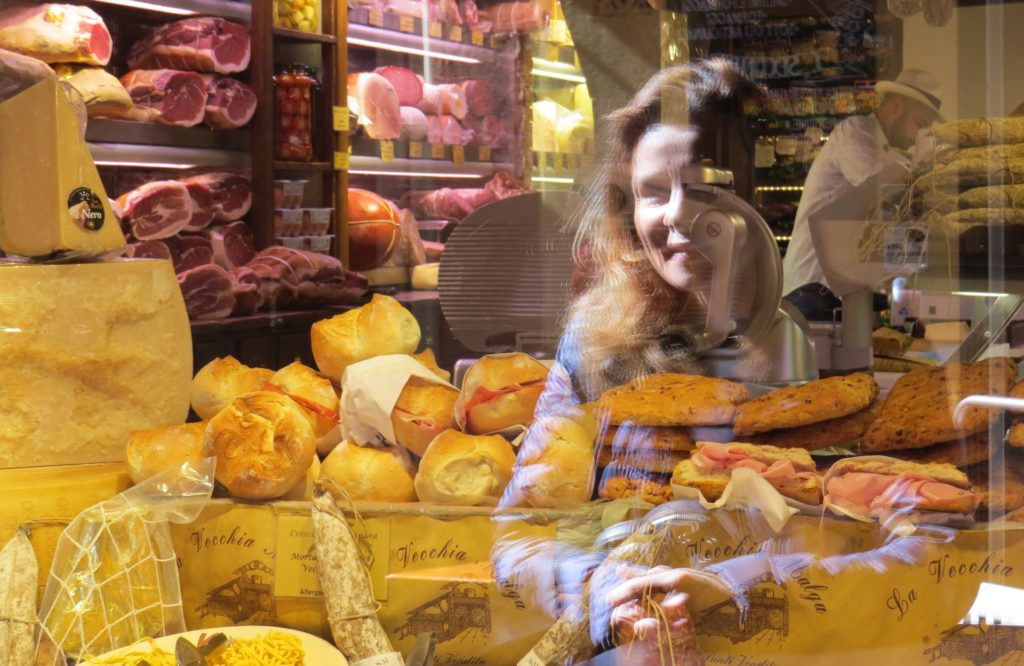 Last weekend my daughter and I booked a trip to this beautiful city (as it is now connected with Podgorica by a direct Ryanair flight). And indeed, we found that Bologna is a great place to spend a few days: it is small enough to get around easily by foot, it is full of culture, architecture and shopping possibilities and it probably offers the best food in Italy.
Last weekend my daughter and I booked a trip to this beautiful city (as it is now connected with Podgorica by a direct Ryanair flight). And indeed, we found that Bologna is a great place to spend a few days: it is small enough to get around easily by foot, it is full of culture, architecture and shopping possibilities and it probably offers the best food in Italy.
Bologna’s curious nicknames are: the Educated, the Fat and the Red, or in Italian: la Dotta, la Grassa e la Rossa.
‘Educated’ is for the city’s university, the oldest in Europe and home to such intellectual greats as Dante Alighieri, Petrarca, Umberto Eco, Copernicus… The ‘Alma Mater Studiorum’, founded in 1088, is currently frequented by 85,000 students, 7% of which are from foreign countries.
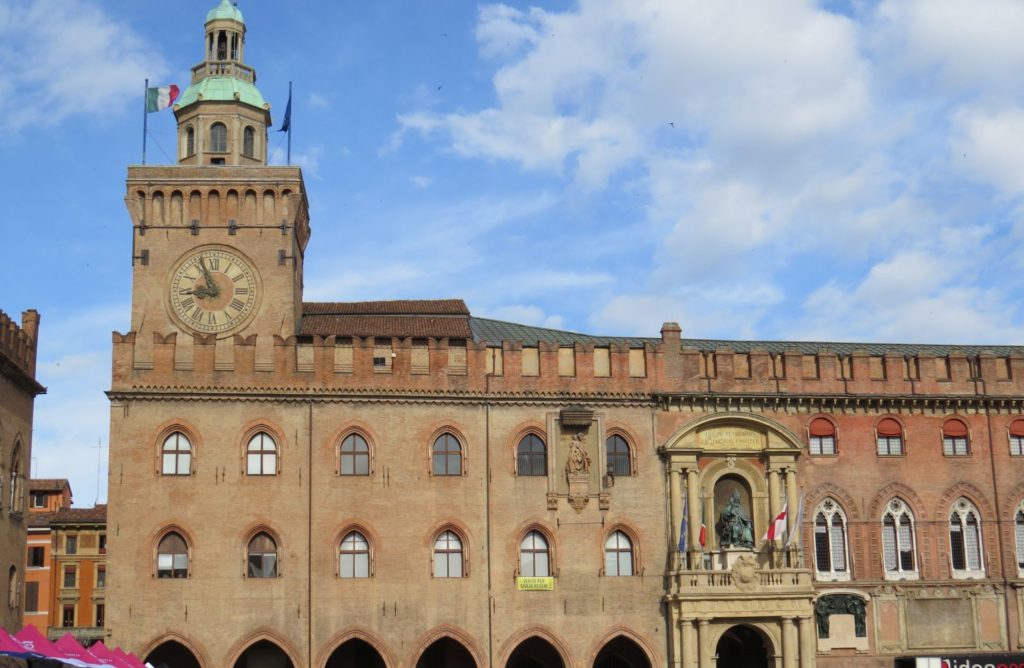 ‘Red’ refers both to the terracotta color of the brick buildings that most of Bologna’s historical buildings and porticoes are made from, but also to the city’s history of leftist politics.
‘Red’ refers both to the terracotta color of the brick buildings that most of Bologna’s historical buildings and porticoes are made from, but also to the city’s history of leftist politics.
‘Fat’, of course, is for Bologna’s culinary history, based on home-made pasta like tagliatelle and tortellini, Prosciutto di Parma, mortadella, salami and the famous Parmigiano Reggiano cheese.
Equipped with a city plan, we started exploring the old town on foot – the beautifully preserved medieval center appeared to be quite compact. On Piazza Maggiore, the main square, we admired the Town Hall (Palazzo d’Accursio) built in the 14th century and we wandered inside the Basilica di San Petronio, which was never completed, but still is the 5th largest church in the world. It was crowdy. Piazza Maggiore looked like a big fair, as Bologna was the starting point for the ‘Giro d’Italia’, a famous multiple stage bicycle race. Next to the square, in front of the main library Sala Borsa, we found the statue of Neptune.
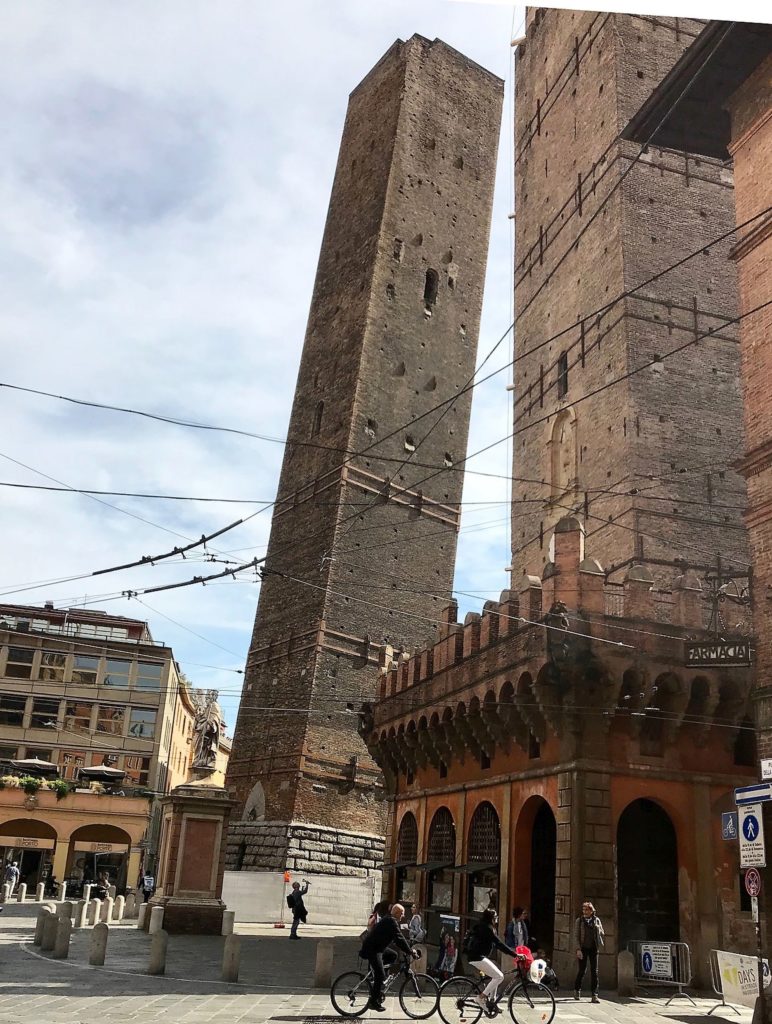 Our next goal was the area around the two towers – Torre Asinelli and Torre Garisenda. They are a symbol of the city, and the shorter of the pair, Torre Garisenda, leans much more dramatically than Pisa’s leaning tower. We convinced ourselves that this is really true! This tower, together with its sister tower Asinelli are the only two left of the many that used to dot the landscape in medieval times, when rival noble families would compete to exert their dominance by building the tallest tower.
Our next goal was the area around the two towers – Torre Asinelli and Torre Garisenda. They are a symbol of the city, and the shorter of the pair, Torre Garisenda, leans much more dramatically than Pisa’s leaning tower. We convinced ourselves that this is really true! This tower, together with its sister tower Asinelli are the only two left of the many that used to dot the landscape in medieval times, when rival noble families would compete to exert their dominance by building the tallest tower.
The center of Bologna has many old churches, but what struck us most was the fact that Bologna is covered with porticoes throughout the city. These pretty arches protected us from the rain, but I can also imagine that they shield you from the sun during the hot summer. By the way, many years ago, merchants would set up stalls here to sell their products.
The flee market on Piazza Santo Stefano was a real attraction for locals and visitors, and the Basilica Santo Stefano (photo 1), a complex of seven churches built over a six hundred-year period in different styles, was of a simple, unique beauty. This sanctuary was founded by Bishop Petronius in the 5th century on the site of ruins of an ancient temple to the goddess Isis.
We discovered that there are good reasons to call Bologna Italy’s culinary capital. A walk through the Quadrilatero district behind Piazza Maggiore, in particular through Via Pescherie Vecchie and Via Drapperie, was a feast for the eyes and nose.
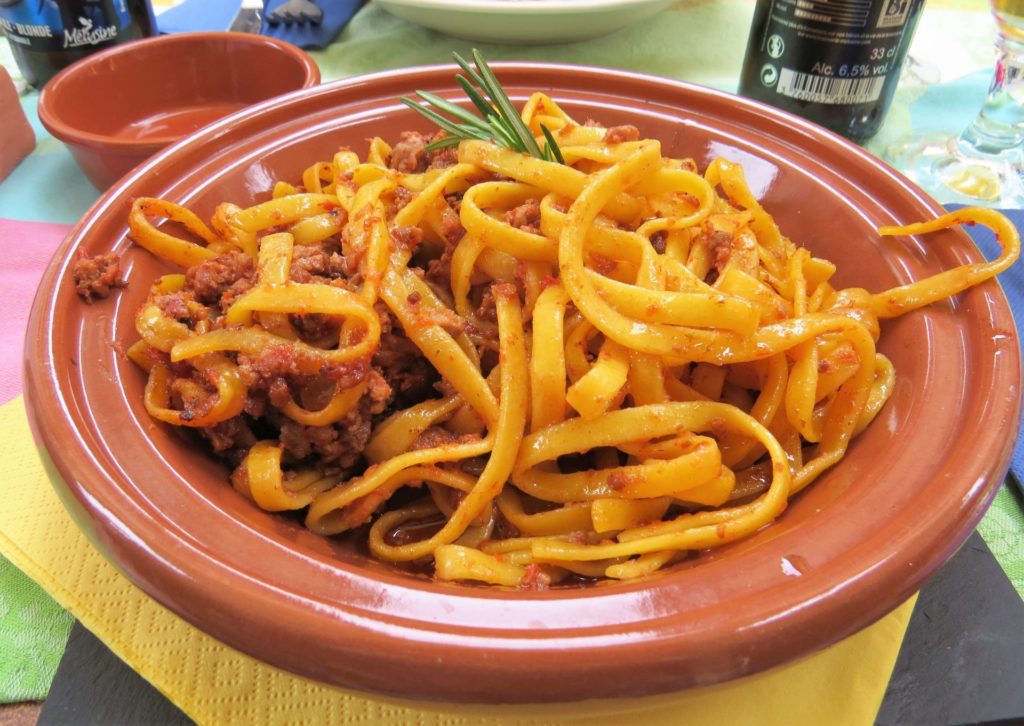 We tried the famous ‘tagliatelle al ragù’, made of long and flat pasta strips with a ragù sauce made out of minced beef, onions, celery, carrots and tomato. Another perfect choice was a plate of ‘salumeria’: mortadella, salami and prosciutto. And of course, we didn’t forget to taste the Parmigiano Reggiano cheese!
We tried the famous ‘tagliatelle al ragù’, made of long and flat pasta strips with a ragù sauce made out of minced beef, onions, celery, carrots and tomato. Another perfect choice was a plate of ‘salumeria’: mortadella, salami and prosciutto. And of course, we didn’t forget to taste the Parmigiano Reggiano cheese!
After lunch we wandered around the student district, where we found charming bars and beautiful historical buildings. There were many young people on the streets. That might also explain the presence of numerous anti-establishment graffiti within the centuries-old arches.
As there were no signposts around to show us where we could find the main tourist attractions, we discovered the city by ourselves, walking beneath endless colonnades and enjoying every shade of red, from cardinal and carmine over orange, rust and scarlet.
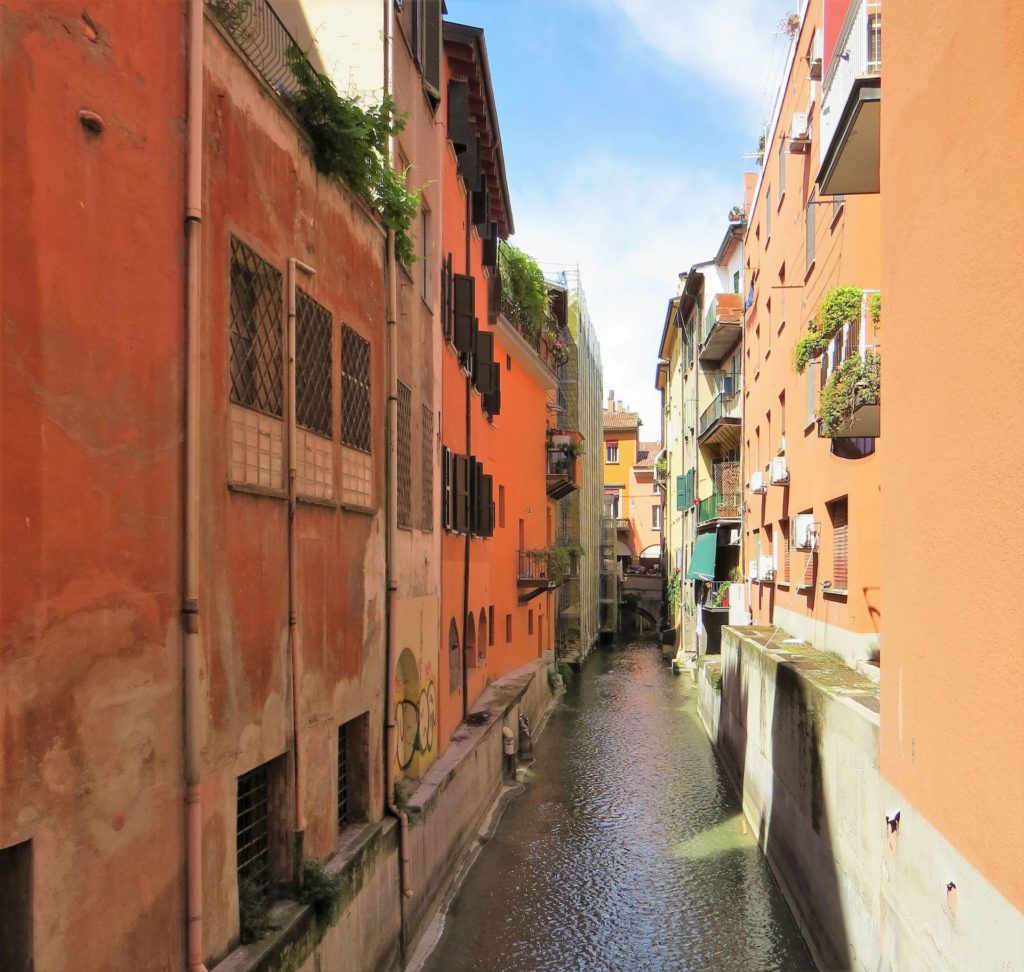 A hidden secret was ‘Little Venice’: in Via Piella we saw a secret glimpse of the small canal that runs underground the city. It was hard to believe that Bologna was once a city built on canals with an important textile industry.
A hidden secret was ‘Little Venice’: in Via Piella we saw a secret glimpse of the small canal that runs underground the city. It was hard to believe that Bologna was once a city built on canals with an important textile industry.
The following day was dedicated to culture: the Pinacoteca Nazionale, a museum with art from the 14th to the 18th century, appeared to be a good choice. And at the Communal Theatre we attended a modern ballet performance.
Like many locals, we had an afternoon walk along Via Indipendenza. This is a great shopping street, lined by porticoes that were built hundreds of years ago.
I can only recommend this weekend trip to those inhabitants of Montenegro who want to spend a few days in a beautiful, not too crowdy Italian city!

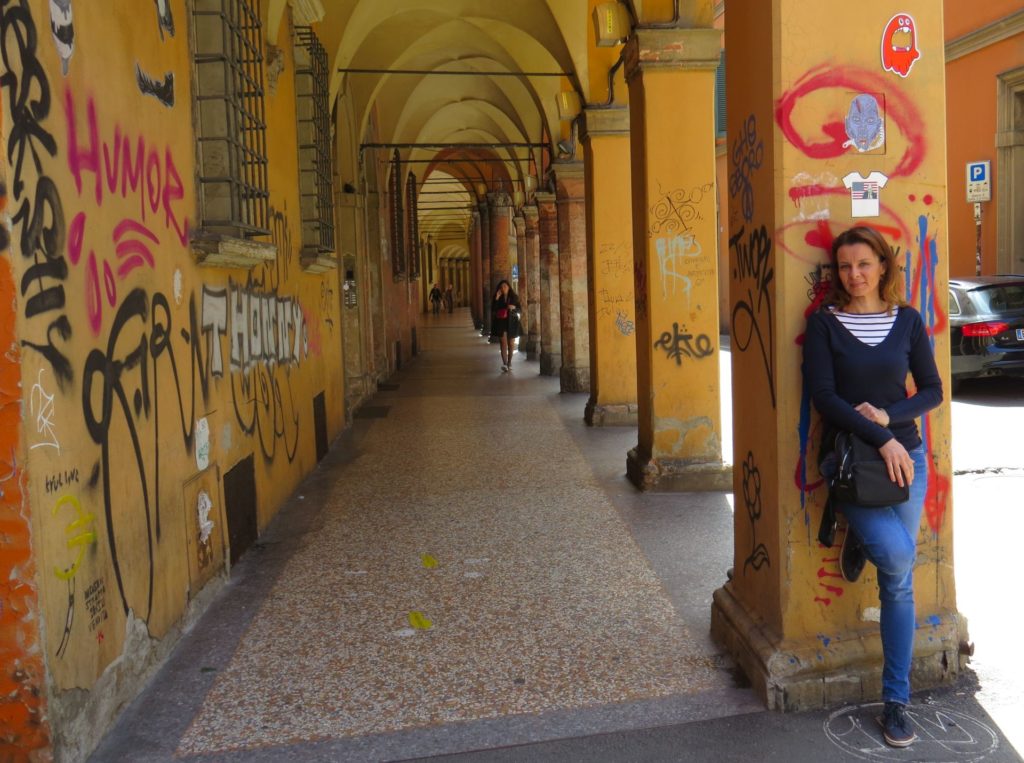
Bella bologna